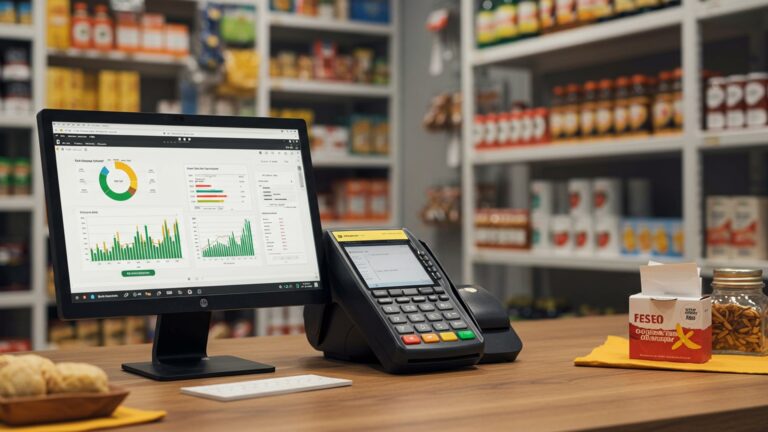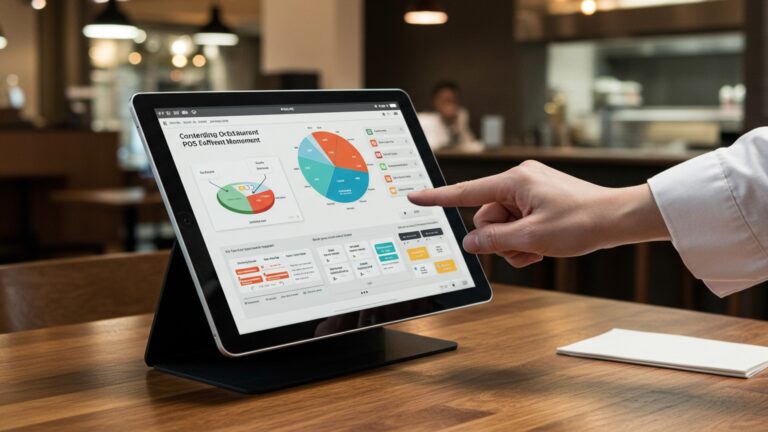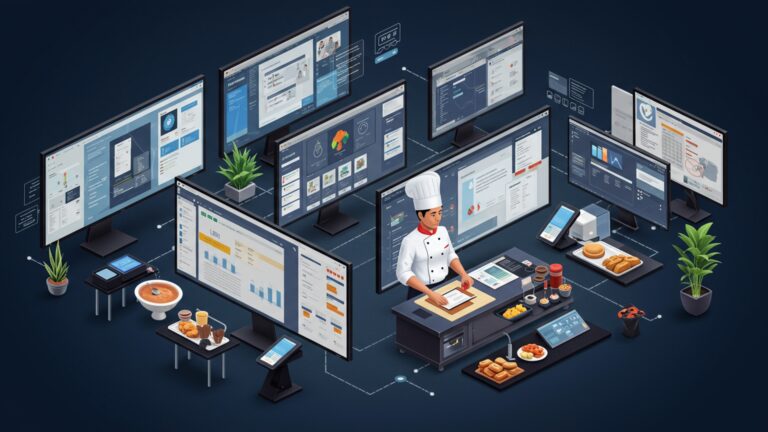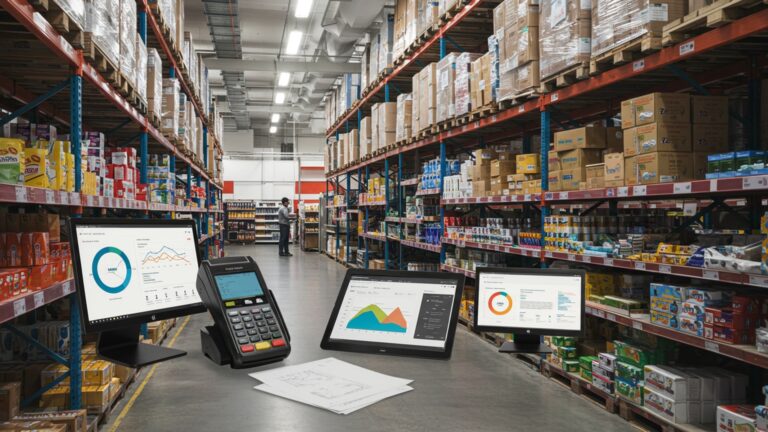Master 7 Essential Android POS Tips for Indian Restaurant Success
Indian restaurants navigate a dynamic landscape, from intricate regional menus and fluctuating ingredient costs to the growing demand for rapid digital payments. An optimized Android POS for restaurants India isn’t just a billing system; it’s a strategic operational backbone. Modern platforms, leveraging cloud connectivity, now offer real-time inventory synchronization, multi-outlet management. robust integration with popular delivery apps and UPI gateways, addressing the specific complexities of the Indian market. Mastering its capabilities—like streamlined KOT generation, efficient table management. data-driven insights—becomes paramount for enhancing customer satisfaction, accelerating service. ultimately driving a healthier bottom line in this competitive sector.
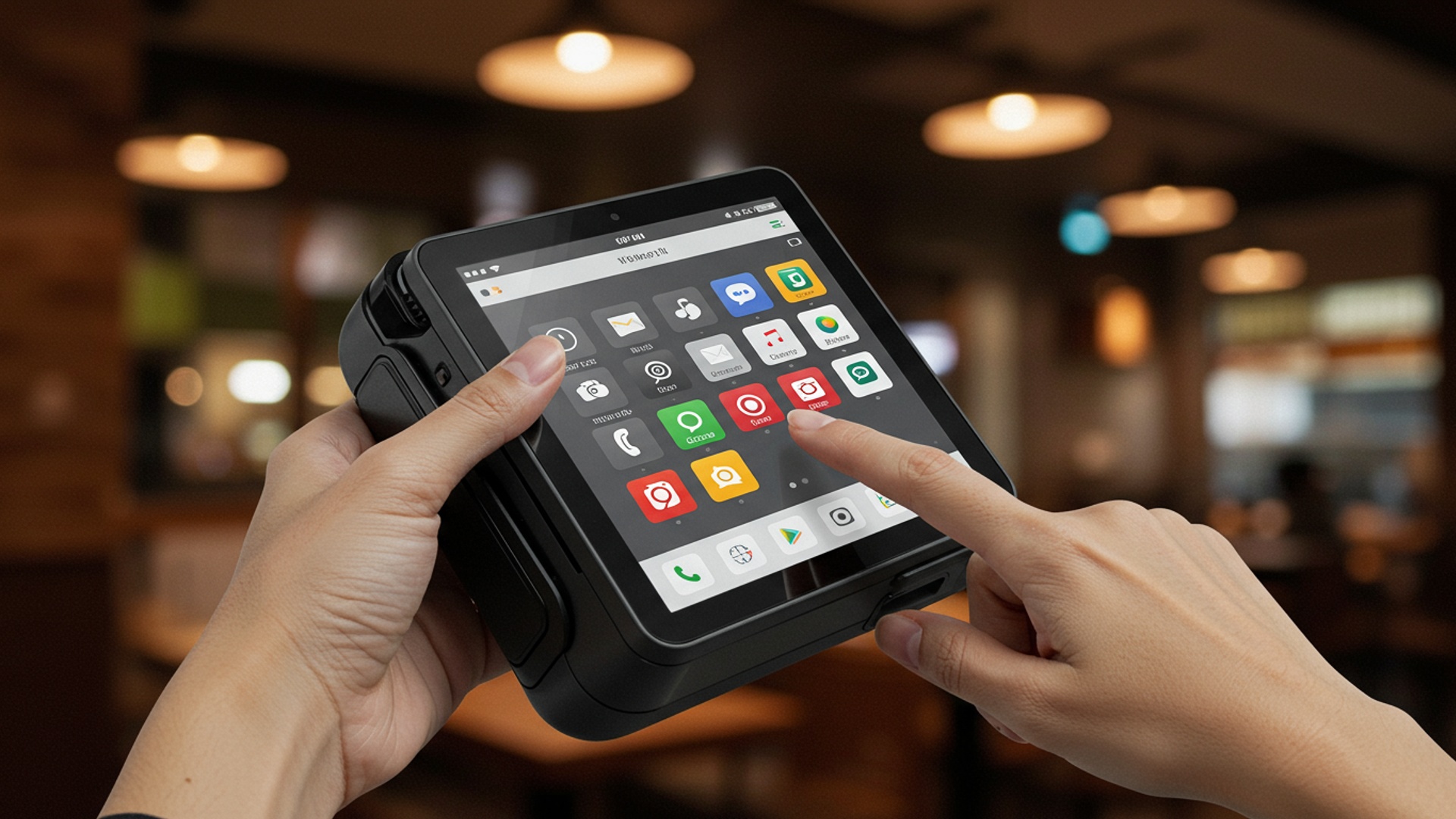
1. Selecting the Optimal Android POS System for Your Indian Restaurant
In the dynamic landscape of the Indian restaurant industry, choosing the right Point of Sale (POS) system is paramount. An Android POS for restaurants India offers flexibility and cost-effectiveness. the “right” system is one that aligns perfectly with your specific operational needs and growth ambitions. It’s not just about processing transactions; it’s about finding a partner in efficiency.
What is an Android POS?
An Android POS system leverages the Android operating system, commonly found in smartphones and tablets, to run POS software. This allows for a wide range of hardware options, from dedicated terminals to ruggedized tablets, offering a more versatile and often more affordable alternative to traditional proprietary systems. For Indian restaurants, this means access to a robust ecosystem of apps and hardware that can adapt to various business models, from small cafes to large fine-dining establishments.
When evaluating options, consider the following:
- Scalability
- Feature Set
- Local Support and Customization
- Pricing Model
Your POS should grow with you. Can it handle multiple outlets, increased transaction volumes, or additional features as your business expands? A system that forces you to switch providers every few years can be disruptive and costly.
Beyond basic order processing, does it offer table management, inventory tracking, kitchen display system (KDS) integration. staff management? For an Indian restaurant, specific features like managing multiple thali combinations, handling complex ingredient lists for gravies, or tracking spice inventory can be crucial.
Ensure the provider offers local support in India, understanding the nuances of the Indian market, local tax regulations (like GST). popular payment methods. Customization options to reflect your menu, branding. operational flow are invaluable.
grasp whether it’s a one-time purchase, subscription-based, or transaction-fee-based. Compare the total cost of ownership over several years, including hardware, software licenses. support.
Imagine a multi-cuisine Indian restaurant in Bangalore. They initially chose a basic Android POS. As they expanded to include online delivery and a loyalty program, they found their system couldn’t integrate. They had to invest in a more robust Android POS for restaurants India that offered modular features, allowing them to add KDS, CRM. online ordering integrations seamlessly without a complete overhaul.
2. Seamless Integration with Existing Restaurant Ecosystems
A standalone POS system, no matter how advanced, operates in a silo. True efficiency comes from a well-integrated ecosystem where your Android POS for restaurants India communicates effortlessly with other critical operational components. This connectivity eliminates manual data entry, reduces errors. speeds up service.
Key integration points include:
- Kitchen Display Systems (KDS)
- Online Ordering Platforms
- Payment Gateways
- Inventory Management Systems
A KDS is a digital screen in the kitchen that displays incoming orders. When your POS integrates with a KDS, orders taken by servers or through online platforms appear instantly, categorised. prioritised. This drastically reduces order errors, improves kitchen efficiency. ensures faster table turns. For a busy Indian restaurant during peak hours, this can be the difference between chaotic and controlled service.
In India, platforms like Zomato, Swiggy. direct online ordering portals are vital for revenue. An integrated Android POS automatically receives orders from these platforms, pushing them directly to the kitchen or for billing, streamlining the entire delivery process and preventing missed orders.
Offering diverse payment options is crucial in India. Your POS should integrate with popular local payment gateways such as Paytm, Razorpay, Google Pay. credit/debit card processors. This integration ensures secure, fast transactions and reduces the need for separate payment terminals, simplifying reconciliation.
Accurate inventory tracking is essential for cost control. Integration means every sale automatically updates stock levels, alerting you when items are low. For an Indian restaurant with many ingredients, this prevents stockouts of critical spices or fresh produce and helps in managing food costs more effectively.
| Integration Type | Description | Pros for Indian Restaurants | Cons |
|---|---|---|---|
| API-based Integration | Systems communicate directly via Application Programming Interfaces. | Real-time data flow, highly customizable, robust for complex operations. Ideal for Android POS for restaurants India needing deep connectivity. | Requires technical expertise, potentially higher setup cost. |
| File-based Integration | Data is exchanged through import/export of files (e. g. , CSV). | Simpler to set up, suitable for less frequent data exchange. | Not real-time, prone to delays and errors in high-volume environments. |
| Middleware Integration | A separate software layer connects disparate systems. | Can connect legacy systems with modern POS, flexible. | Adds another layer of complexity, potential point of failure. |
When investing in an Android POS for restaurants India, always prioritize systems that boast a robust and open API for seamless integration with your entire operational stack. This forward-thinking approach will save you significant time and resources in the long run.
3. Empowering Your Team: Staff Training and Adoption
Even the most sophisticated Android POS for restaurants India is only as effective as the people using it. Comprehensive staff training and fostering a culture of adoption are critical for maximizing your POS investment. Without proper training, staff may struggle, leading to slow service, errors. frustration.
- Structured Training Modules
- Hands-on Practice
- User-Friendly Interface
- Ongoing Support and Refresher Training
- Feedback Loop
Don’t just show them once. Develop clear, structured training modules that cover everything from basic order entry and table management to specific functions like splitting bills, applying discounts. handling returns. Use real-world scenarios relevant to an Indian restaurant (e. g. , managing a large family order, handling multiple modifications to a dish).
Provide a dedicated training environment or ‘dummy’ mode where staff can practice without affecting live orders. Repetition builds confidence and muscle memory.
An intuitive, icon-driven interface on your Android POS will significantly reduce the learning curve. If the system is complex, break down training into smaller, manageable sessions.
Technology evolves. so do menus and processes. Schedule regular refresher training sessions. Designate a ‘POS Champion’ within your team who can act as a first point of contact for minor issues and provide peer-to-peer support.
Encourage staff to provide feedback on the POS system. They are on the front lines and can identify areas for improvement or common pain points. This also makes them feel valued and invested in the system’s success.
A popular South Indian restaurant in Chennai implemented a new Android POS. Initially, staff resisted, finding it complicated compared to their old manual system. The owner, But, invested in two weeks of intensive training, including daily practice sessions and a reward system for quick adoption. Within a month, order accuracy improved by 20%. table turnover increased, proving that investment in training pays dividends.
4. Fortifying Your Business: Data Security and Backup
In an increasingly digital world, the security of your restaurant’s data is non-negotiable. Your Android POS for restaurants India handles sensitive data, including customer payment details, sales records. inventory data. A breach can lead to significant financial loss, reputational damage. legal repercussions.
- Access Control and User Permissions
- Data Encryption
- Regular Data Backups
- Secure Network and Device Management
- Compliance with Indian Regulations
Not all staff need access to all features. Implement role-based access control, ensuring that only authorized personnel can perform specific actions (e. g. , voiding orders, accessing sales reports, modifying prices). This minimizes internal fraud and accidental errors.
Ensure that all sensitive data, especially payment details (e. g. , credit card numbers), is encrypted both in transit and at rest. Look for POS systems that comply with industry standards like PCI DSS (Payment Card Industry Data Security Standard) if you handle card payments directly.
Data loss can be catastrophic. Implement a robust backup strategy. For cloud-based Android POS systems, backups are often automated and stored securely off-site. For on-premise systems, establish a schedule for daily or weekly backups to external drives or cloud storage. Test your backup recovery process periodically to ensure data can be restored effectively.
Ensure your restaurant’s Wi-Fi network is secure. Use strong, unique passwords for all POS devices. Keep POS software and the Android operating system updated to patch known vulnerabilities. Consider mobile device management (MDM) solutions if you use multiple Android tablets for order taking.
Stay informed about data protection laws in India (e. g. , Personal Data Protection Bill, once enacted) that may impact how you store and process customer data.
“Data is the new currency. For restaurants, protecting customer details and transactional data is not just good practice; it’s a legal and ethical imperative. A well-secured Android POS for restaurants India is foundational to building customer trust.” – Cybersecurity Analyst.
5. Unlocking Insights: Leveraging Analytics and Reporting
Your Android POS for restaurants India is more than just a transaction processor; it’s a goldmine of actionable data. By effectively utilizing its analytics and reporting features, you can gain deep insights into your business performance, identify trends. make informed decisions that drive profitability and growth.
Key areas where POS analytics provide value:
- Sales Performance
- Daily/Weekly/Monthly Sales
- Item-wise Sales
- Server Performance
- Inventory Management Insights
- Food Cost Analysis
- Wastage Reports
- Stock Level Alerts
- Customer Behavior
- Peak Hours/Days
- Customer Preferences
Track revenue over various periods to identify peak hours, days. seasons.
Discover your best-selling dishes and those that aren’t performing well. This is crucial for menu engineering – optimizing your menu for profitability. For Indian restaurants, this might reveal popular regional dishes or specific thali combinations.
Monitor individual server sales to identify top performers and areas where staff might need additional training.
comprehend the cost of ingredients relative to menu prices. Pinpoint dishes with high margins and those that might need price adjustments or recipe modifications.
Track ingredient waste to minimize losses.
Receive automated notifications when ingredients are running low, ensuring you never run out of critical items like paneer, basmati rice, or specific spices.
Optimize staffing levels and marketing efforts based on when your restaurant is busiest.
If integrated with a CRM, track individual customer order history to offer personalized recommendations or promotions.
Sales Summary Report:
Date Range: 2023-11-01 to 2023-11-30
Total Revenue: INR 1,500,000
Total Orders: 3,000
Average Order Value: INR 500
Top 3 Selling Items:
1. Butter Chicken (250 units) - Revenue: INR 125,000
2. Paneer Tikka (200 units) - Revenue: INR 100,000
3. Garlic Naan (400 units) - Revenue: INR 40,000 Wastage Report (Monthly):
Item: Basmati Rice - Quantity Wasted: 15 kg - Cost: INR 900
Item: Fresh Coriander - Quantity Wasted: 5 kg - Cost: INR 500
Regularly review your POS reports. Don’t just generate them; assess them to identify trends. For instance, if your POS shows a dip in lunch sales on Tuesdays, consider a special “Tuesday Thali” promotion. If a specific dish consistently underperforms, consider revamping it or removing it from the menu.
6. Reliability in the Face of Adversity: Optimizing for Offline Capability
In India, internet connectivity can sometimes be unpredictable. Power outages, network issues, or even local disruptions can bring a cloud-based system to a grinding halt if it lacks robust offline capabilities. An effective Android POS for restaurants India must be designed to continue operations seamlessly, even without an active internet connection, to prevent service interruptions and revenue loss.
A good Android POS with offline mode stores all transaction data locally on the device. When the internet connection is lost, the system continues to function normally, allowing staff to take orders, process payments (if offline payment methods are supported). manage tables. Once the internet connection is restored, the locally stored data automatically syncs with the cloud server, ensuring all records are updated without manual intervention.
Key aspects to consider:
- Automatic Syncing
- Data Integrity
- Offline Payment Processing
- Hardware Reliability
Ensure the system automatically detects when connectivity is restored and syncs all pending transactions. Manual syncing can be easily forgotten, leading to data discrepancies.
The system must be designed to handle data conflicts that might arise during syncing (e. g. , if an item was updated offline and also on the cloud). Robust conflict resolution mechanisms are crucial.
While online card transactions require connectivity, some Android POS systems offer limited offline payment options for cash or certain types of local digital wallets that can process transactions offline and sync later. Always have a backup plan for payments during outages.
Ensure your Android POS hardware itself is robust and has sufficient local storage to handle accumulated data during offline periods.
A popular street-food style Indian restaurant in Mumbai experiences a sudden internet outage during its busiest lunch rush. Because their Android POS had excellent offline capabilities, servers continued taking orders on their tablets, kitchen staff received them on the KDS (also running offline or via local network). cash payments were processed. When the internet returned an hour later, all transactions synced automatically. not a single order was lost, preserving customer satisfaction and revenue.
When evaluating an Android POS for restaurants India, explicitly inquire about its offline capabilities. Ask for demonstrations and comprehend the limits of its functionality without an internet connection. This feature is a critical safeguard for uninterrupted service.
7. Building Lasting Relationships: Customer Relationship Management (CRM) Features
In the competitive Indian restaurant market, customer loyalty is a precious commodity. Integrating Customer Relationship Management (CRM) features into your Android POS for restaurants India can transform one-time visitors into loyal patrons, driving repeat business and enhancing your brand reputation.
What are POS CRM Features?
These features allow you to collect, store. examine customer data, enabling personalized marketing and improved service. This goes beyond just taking an order; it’s about understanding and responding to individual customer preferences.
- Loyalty Programs
- Points-based Systems
- Tiered Rewards
- Birthday/Anniversary Offers
- Customer Feedback Management
- Integrated Feedback Forms
- Review Management
- Complaint Resolution
- Personalized Marketing & Communication
- Order History Tracking
- Targeted Promotions
- SMS/Email Marketing Integration
Customers earn points for every purchase, redeemable for discounts or free items.
Offer escalating benefits for different loyalty levels (e. g. , Bronze, Silver, Gold).
Automatically send personalized discounts or freebies on special occasions, making customers feel valued.
Allow customers to provide feedback directly through the POS or via digital links after their meal.
Track and respond to reviews on platforms like Google, Zomato, or Swiggy, often integrated or linked from the POS.
Quickly identify and address customer complaints, turning negative experiences into opportunities for recovery.
grasp individual customer preferences (e. g. , preferred dishes, spice levels, dietary restrictions).
Use customer data to send personalized offers (e. g. , “We noticed you love our Biryani; here’s a special discount on your next order!”).
Directly communicate with customers about new menu items, special events, or promotions.
A fine-dining North Indian restaurant in Delhi uses its Android POS with integrated CRM to identify its top 100 customers. These customers receive exclusive invitations to tasting events, early access to new menu launches. personalized discounts. This strategy has resulted in a 30% increase in repeat visits from this segment and positive word-of-mouth marketing.
Don’t just collect customer data; use it intelligently. Implement a loyalty program and actively encourage feedback. The insights gained from your Android POS for restaurants India‘s CRM capabilities are invaluable for fostering long-term customer relationships and ensuring sustained business growth.
Conclusion
Mastering your Android POS is not merely about adopting new technology; it’s about strategically empowering your Indian restaurant to thrive in a competitive market. From my observations, the true game-changer lies in leveraging these essential tips to streamline operations during peak hours, manage diverse menus effortlessly. enhance customer satisfaction through faster service. Imagine the seamless flow during a Sunday lunch rush, where orders are accurately taken, KOTs instantly printed. digital payments processed without a hitch – this efficiency directly translates into repeat customers and a healthier bottom line. Don’t just read about these tips; integrate them into your daily operations. Start by ensuring your staff is thoroughly trained, regularly review your inventory insights to manage Indian spices and fresh produce effectively. consistently update your menu on the system to reflect daily specials like a “Chef’s Special Thali.” As I’ve always believed, the power of an Android POS truly shines when its capabilities are fully utilized, transforming everyday challenges into opportunities for growth. Embrace this digital shift, as Android POS for restaurants in India demonstrably boosts efficiency. watch your business not just survive. truly prosper.
More Articles
10 Reasons Why Android POS for Restaurants in India Boosts Efficiency
Discover 5 Best Restaurant POS Systems for Small Eateries in India
How to Choose the 5 Best POS System Options for Your India Restaurant
How to Easily Set Up Mobile POS Software for Your Small Business
7 Smart Benefits of a Restaurant POS System for Small Restaurants India
FAQs
Why should my Indian restaurant even consider an Android POS system?
An Android POS system can really boost your restaurant’s efficiency. It helps you manage orders faster, reduces billing errors, tracks inventory better. ultimately makes your customers happier with quicker service.
How does an Android POS help with managing unique Indian ingredients and recipes?
These systems are great for tracking all your specific ingredients, from spices to fresh produce. You can set up recipes, so inventory is automatically deducted when a dish is sold, helping you minimize waste and ensure consistent portions.
Can it handle our usual KOT (Kitchen Order Ticket) process and custom order requests efficiently?
Definitely! Android POS systems are designed for this. They generate clear KOTs, allow for easy modifications to orders (like “less spicy” or “no onion”), manage tables. even help with splitting bills or combining orders effortlessly.
What about payment options? Can it handle UPI and split payments easily for diners?
Yes, modern Android POS systems are very flexible with payments. They support various methods including UPI, credit/debit cards. cash. Splitting bills among multiple diners or by item is usually a straightforward process.
Will it be difficult to train my staff to use this new technology?
Not at all! Most Android POS interfaces are super user-friendly and intuitive, much like using a smartphone. With a little initial training, your staff should pick it up quickly, making their job easier too.
What kind of insights can I get from the POS to help my Indian restaurant grow?
You’ll get tons of valuable data! Think about reports on your best-selling dishes, peak dining hours, inventory usage trends. even staff performance. This info helps you make smart decisions to improve your menu, staffing. promotions.
How can an Android POS actually improve my customers’ experience at the restaurant?
By speeding up order taking and billing, ensuring order accuracy. potentially offering loyalty programs, an Android POS directly enhances customer satisfaction. Faster, smoother service means happier diners who are more likely to return.

